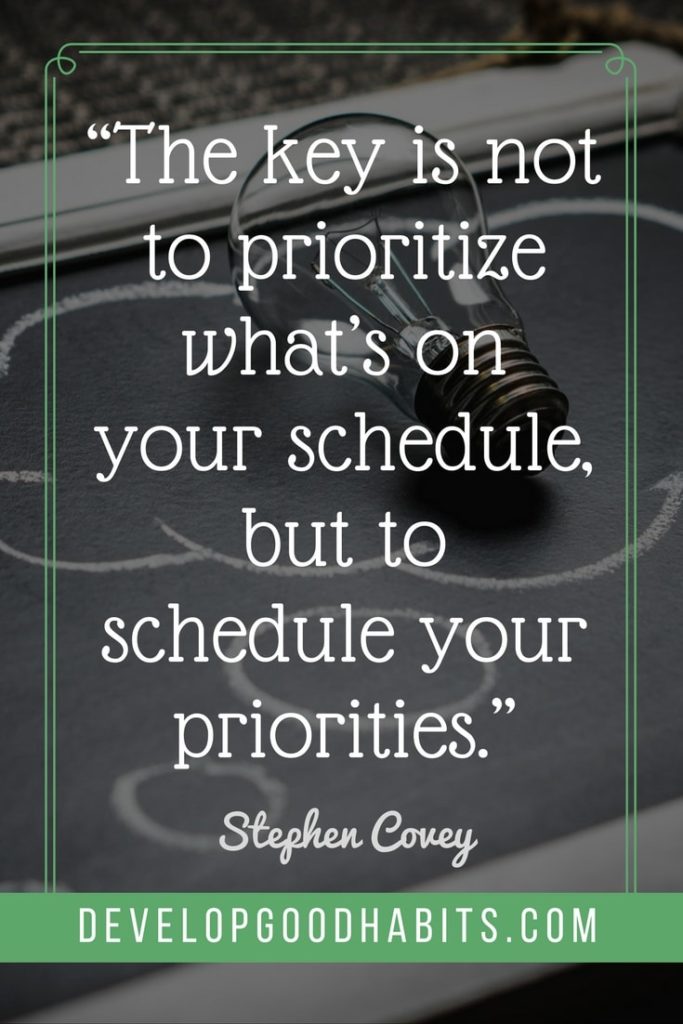There might be affiliate links on this page, which means we get a small commission of anything you buy. As an Amazon Associate we earn from qualifying purchases. Please do your own research before making any online purchase.
The following is a sample from my book To-Do List Makeover: A Simple Guide to Getting the Important Things Done. Many people start writing out a to-do list with good intentions but end up abandoning it because of overwhelm. If you want to learn how to write to-do lists that work, avoid and fix the following mistakes. Be sure to check out the book to learn how to create better to-do lists.
Most people don’t put much thought into their to-do lists. Usually, a to-do list is a mixed bag of urgent tasks, appointments, and projects. The problem is that it’s impossible to get things done if your actions are not completely clear.
It’s easy to make mistakes like this with your lists, but the key to taking effective action on a daily basis is identifying these mistakes and finding a way to overcome them. Here are seven common mistakes many people make:
7 Common To Do List Mistakes
Mistake #1: Writing Lengthy Lists
Many people start their days with dozens of tasks to complete. Tasks often vary based on the amount of time they will take, the amount of preparation required and their order of importance.
A list like this is often de-motivating because it’s simply not possible to complete every item on a consistent basis.
The solution?
Write down no more than three “critical tasks” for each day on a small piece of paper. These are the actions that will have the biggest benefit, so they should be given top priority. It also helps to complete each task in order of importance. That way you’re starting the day doing the one thing that will have the greatest impact on your life.
Reinforce the idea that these are important tasks by keeping this list in front of you at all times.
In addition, I recommend starting your day with one habit that drives your career (or business) forward. The idea here is that no matter what happens for the rest of the day, you’ve completed the most important task.
As an example, a year ago I determined that writing was a routine that’s a critical part of my business. Now I always schedule a block of writing first thing in the morning before doing anything else.
Finally, people write long lists because they have a fear of forgetting an important task. While I think it’s important to map out the week, you shouldn’t start the day with a massive list of tasks. You never know what will come up and how your priorities will change, so it’s better to focus on a handful of specific tasks.
Mistake #2: Being Ambiguous
Many people write down tasks without a clearly defined beginning or end point. You might think this acts as a helpful reminder to take action, but it usually causes stress because you don’t know how to get started.
For instance, let’s say you write, “Work on presentation.” This is an ambiguous idea because it doesn’t include specific, actionable tasks. You could phrase it better by writing “Watch five Ted Talks on YouTube,” “Write a rough draft of my presentation” or “Think of three presentation ideas.”
Remember, each task should include a specific action. That way, you’ll know if it has or has not been completed. Furthermore, each task should also meet the following criteria:
A great solution to ambiguity is to create SMART goals. Take a few minutes to watch the video below for a quick overview of SMART goals and three examples for each of the seven areas of your life.
Mistake #3: Not Managing Your Time
It’s hard to be productive if you don’t know how long it takes to complete a task. We all have made the mistake of creating lists full of ambiguous items, but how often have you analyzed the time required to complete each task? Odds are it could take you anywhere from a few minutes to a few days.
Before starting any task, create a rough estimate of how much time you’ll need. This gives you a simple framework of what can be accomplished on a given day.
Even if you’re wrong, at least you’ll start to learn how to properly manage time. Obviously, this is a habit that takes some practice. However, if you do it on a regular basis, you’ll get better at predicting what’s actually possible to accomplish every day.
See more about time management in these posts
Mistake #4: Letting Random Events Derail You
Every day is different. We all experience emergencies and unexpected tasks that fall into our laps. While it’s important to structure your day, it’s equally important to be flexible.
Begin every day by checking your calendar. See what activities you have scheduled. Look a few days into the future to see what else you have planned. Then, once this is done, make sure you include at least an hour of free time every day for unplanned activities.
You’ll find that creating a cushion for emergencies will reduce your stress levels. In your worst-case scenario, you’ll have extra time to take care of random events. If nothing comes up, use this time to work on those not-so-important tasks that are cluttering your project lists (again, more on this later).
Mistake #5: Focusing on “Small Outcomes”
I know it’s tempting to create lists that are full of seemingly urgent tasks. These are the items that might look important but really aren’t that valuable to your long-term plans.
Your daily lists should focus on items with true deadlines (like an important meeting) or an activity that has the biggest impact on your goals (like working on an upcoming presentation). The more you start your day with a focus on “bigger picture” tasks, the more you’ll achieve.
Pareto's 80/20 rule can help you focus on your most important tasks. You can use this to work less and achieve more. Watch the video below for specific examples of how to apply this principle to seven different areas of your life.
Mistake #6: Not Connecting Tasks with Goals
Our motivation often comes from working on activities that truly matter. You’ll find that when something relates to a goal that’s personally important, you won’t need the willpower to get it done—it will be so important that you can’t wait to work on it.
Before creating any to-do list, have a clear reason why each item is included. If you’re writing down an item simply because it sounds like something you should do, then you might want to re-think its inclusion.
The truth is that when a task is connected to a long-term goal, you’ll feel more motivation and desire to get it done.
Mistake #7: Agonizing Over Incomplete Lists
As we’ll discuss in the next section, maintaining four lists is the best way to stay productive. Some items are immediately urgent and others can be ignored if you have a limited amount of time.
Regardless, it’s important to remember that a to-do list isn’t a life-or-death activity, so you shouldn’t agonize over incomplete tasks.
Once again, my advice is to start the day focused on your three most important tasks. If you finish two of the three, then at least you’ve completed two important tasks for the day.
How to Overcome These Common Mistakes
It’s not hard to fix these mistakes. While I’ve touched on a few basic solutions, it’s better to see how each can be incorporated into an actionable plan. Specifically, the core philosophy behind this book is to stop relying on a single list and instead manage your life with four lists that serve different functions.
And if you're looking for resources to help you get started on creating effective lists, be sure to check out these posts:
- 17 Printable Daily Checklist (and To Do List) Templates
- 11 Printable Weekly To-Do List Templates
- 16 Best To-Do List Apps to Get Things Done
To learn more, I encourage you to check out my book To-Do List Makeover: A Simple Guide to Getting the Important Things Done to get started on writing to-do lists that help you get things done.




Hi Scott,
Thanks for clarifying the common mistakes one makes while making a to-do list.
I think making a to-do list is one of the under-rated tricks to increasing productivity.
Though most of get the process right, we miss few principles that can make or break the to-do list system.
I wrote about 12 hidden principles that can make a to-do list work here.
Continue writing and inspiring!
– Sathya